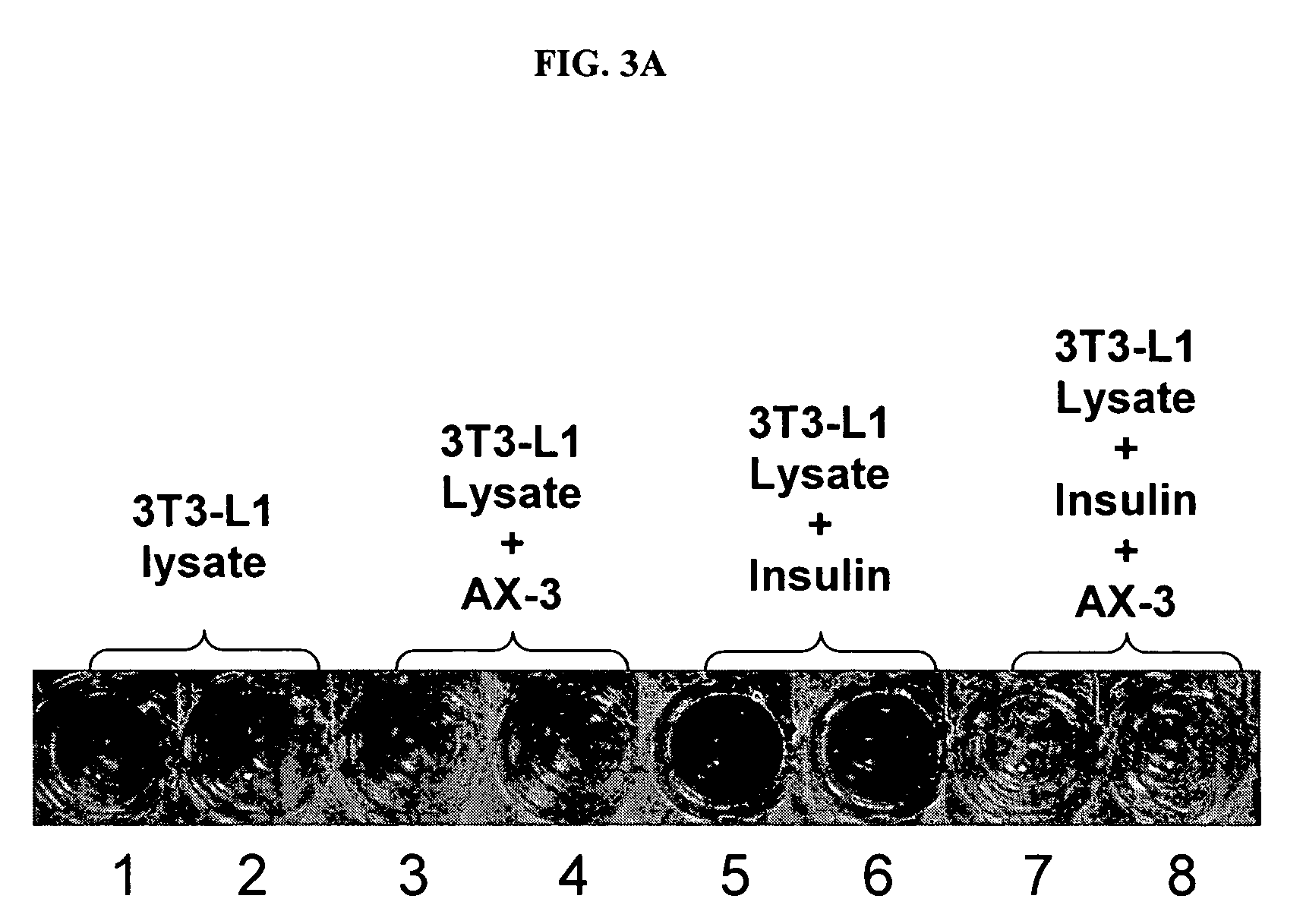Compositions and methods for treating or preventing overweight or obesity with zinc-charged protein fragments
a technology of zinc-charged protein and composition, applied in the direction of peptide/protein ingredients, peptide sources, metabolic disorders, etc., can solve the problems of increased risk of physical ailments, difficulty in losing weight and maintaining the achieved weight loss, and complex neurophysiology of feeding behavior, so as to reduce the weight of a human subject, modulate the activity of insulin receptors, and reduce weight gain
- Summary
- Abstract
- Description
- Claims
- Application Information
AI Technical Summary
Benefits of technology
Problems solved by technology
Method used
Image
Examples
example 1
6.1 Example 1
Preparation of Zinc-Charged Proteins
[0109]Method 1: Forty milliliters of serum (from various animals) is incubated with 8 ml of 0.1M EDTA or EGTA (dissolved in water) for 1 hour. EDTA or EGTA is removed by dialysis against 4 liters of de-ionized water for 3 hours. The EDTA or EGTA-treated serum is incubated with zinc acetate (at final Zn concentration of 50 mM) for at least 4 hours. The precipitates are removed by centrifugation. The 40 ml of serum are subjected to two rounds of dialysis against de-ionized water to remove excess zinc: first, against 10 liters for 18 hours and then, against fresh 4 liters for another 4 hours.
[0110]Method 2: Forty milliliters of milk (from various animals) is incubated with 8 ml of 0.1M EDTA or EGTA (dissolved in water) for 1 hour. EDTA or EGTA is removed by dialysis against 4 liters of de-ionized water for 3 hours. The EDTA-treated milk is incubated with zinc acetate (at final Zn concentration of 50 mM) for at least 4 hours. The precipit...
example 2
6.2 Example 2
Digestion of Zinc-Charged Proteins with Protease
[0114]Method 1: Zinc-charged serum prepared as described above (40 ml) is incubated with papain (2,500 units, from papaya latex) for 2 hours at 37° C. The fragments are collected by passing the incubation mixture through a molecular sieve with a molecular weight cut-off at 3 KDa and up to 10 KDa.
[0115]Method 2: Zinc-charged milk prepared as described above (40 ml) is incubated with papain (2,500 units, from papaya latex) for 2 hours at 37° C. The fragments are collected by passing the incubation mixture through a molecular sieve with a molecular weight cut-off at 3 KDa and up to 10 KDa.
[0116]Method 3: Zinc-charged proteins prepared as described above (5 ml containing 40 μM each of α-2-HS-glycoprotein (AHSG, or fetuin), α-1-acid glycoprotein (AAG), α-1-antitrypsin (AAT), albumin, transferrin and α-fetoprotein) are incubated with papain (468 units, from papaya latex) for 2 hours at 37° C. The fragments are collected by passi...
example 3
6.3 Example 3
[0117]Three A / J mice (6 weeks old, 18-20 grams) kept on a high fat diet and water ad libitum were kept in a cage. After 4 days, the mice were intravenously tail-injected with fragments of AAG prepared in accordance with the above method in the amount 2 mg / Kg body weight for 6 days. The body weights were measured daily.
[0118]Fragments of AAG Inhibit Weight Gain in Mice
[0119]As shown in FIG. 1, the injection of the AAG fragments prepared according to methods described above causes the leveling off of weight gain in the mice (day 5-11). The body weight of the mice remained constant for 6 days after the termination of the injection of the fragments (day 12-17).
PUM
| Property | Measurement | Unit |
|---|---|---|
| body weight | aaaaa | aaaaa |
| concentration | aaaaa | aaaaa |
| weight percent | aaaaa | aaaaa |
Abstract
Description
Claims
Application Information
 Login to View More
Login to View More - R&D
- Intellectual Property
- Life Sciences
- Materials
- Tech Scout
- Unparalleled Data Quality
- Higher Quality Content
- 60% Fewer Hallucinations
Browse by: Latest US Patents, China's latest patents, Technical Efficacy Thesaurus, Application Domain, Technology Topic, Popular Technical Reports.
© 2025 PatSnap. All rights reserved.Legal|Privacy policy|Modern Slavery Act Transparency Statement|Sitemap|About US| Contact US: help@patsnap.com



